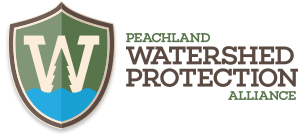Resource roads are typically one- or two-lane gravel roads built for industrial purposes to access natural resources in remote areas. Over 620,000 kilometers of roads on the British Columbia landbase are considered resource roads. Forest Service Roads (FSRs) are maintained by the forest industry under road use permits, or, where there is no industrial user responsible for maintenance, by the B.C. Government, subject to available funding. The B.C. Government administers about 60,000 kilometers of FSRs. Communities, rural residents and high value recreation sites have priority. Therefore, not all are maintained. – Government of BC
Over time, logging operations have altered the land. Roads were cut, temporary bridges were built, streams were blocked, and culverts were placed to allow water to flow under the roads. When logging was finished, some of the land may have been restored, but for sure, the roads remained. These are the legacy roads. The ground is hard packed, and nothing grows there except at the edges. They are sites of almost permanent deforestation. That can be said for all the types of roads in BC.
Some of the effects on logging roads on the ecosystem
- changes in stream flow
- increases chance of landslides
- increases wildlife predation
- increases the wildfire risk
- decreases biodiversity
- increases habitat fragmentation
- increases invasive species
- greater soil compaction and runoff
- increased human impacts

Peachland’s water – showing the amount of sedimentation, much of it caused by resource and logging roads
